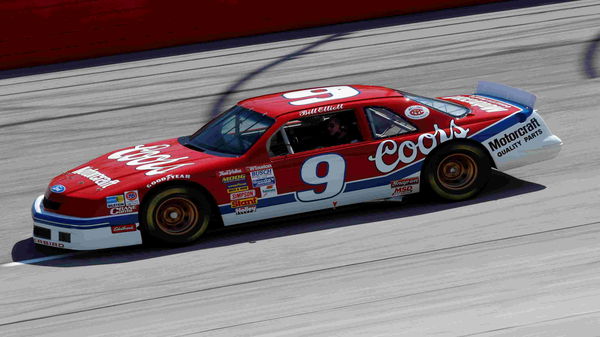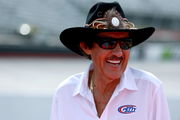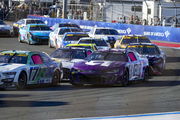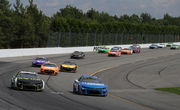

Records are meant to be broken, Is it true in all cases? Maybe some records will simply never be broken. Let us take a trip down memory lane when Bill Elliott of Melling Racing raised pulses with the fastest car in NASCAR at the Talladega Superspeedway back in 1987. However, in the modern era of racing at NASCAR Ryan Newman AKA the rocket man has exhibited raging speeds and crashes.
The Daytona 500 was said to be over 200 miles with Bill Elliott consistently pushing the car. The records set by the Georgia native stand tall even today, he was crowned the star of the 1988 season and is still the fastest man in NASCAR’s history with the track record at both Talladega and Daytona. Back in the day, race cars pushed the limits on the superspeedway track, this led to supersonic speeds and new records. This is evident from the numbers that former Melling Racing drivers produced which many believe was the golden era of superspeedway tracks.
The 1984 and 1988 were the fastest years of NASCAR, Elliot won 33 poles —the top qualifying race position— and a 145-race span between 84 and 87. Now compare this to today’s stale and strategy-driven speedway races and you’ll understand fans’ frustration. The good thing is that we still enjoy the rip-roaring speeds by Elliott thanks to social media.
ADVERTISEMENT
Article continues below this ad
Wild Bill sets wheels on fire over 10,000 rpm
A post on ‘X‘ reminiscing on the great showdown of the 1987 battle between Bobby Allison and Bill Elliott pushing their cars to the top speeds on the Talladega track. Bill Elliott’s No. 9 Ford Thunderbird was built to break records. Built for the 1987 season, the tube-frame car weighed 3,700 pounds and boasted a 351 cubic-inch Ford V8 engine that made 625 horsepower. “here comes Bill Elliott to take the green flag and begin his qualifying attempt. Bill did a lot of testing down in Talladega this winter, and he turned it at a 214-mile-an-hour lap. He wound up as you know of course on pole for this year’s Daytona 500. The row assignments indicate that Elliott and Allison are on a roll,” the video archive of the race stated.
The video showed the faster man on track in NASCAR pushing the gears to hit the top speed ever recorded at Talladega during qualifiers for the 1987 Winston 500. Alabama Gang’s very own Davey Allison was the one who set the tone with his qualifying lap at the high banks of the Daytona. But, the No. 9 Ford machine built by Ernie Elliott for his brother was the class of the field. As Bill Elliott crossed the start-finish line, he had notched up a speed of 212.808 mph with a lap time of 44.998 seconds.
At the 30th anniversary of Elliott’s record-setting lap in 2017, the 1988 NASCAR Cup Series champ reflected on his performance at Talladega while comparing it to his big race at Daytona. “At Talladega, you don’t feel the speed as you do at Daytona because of the transitions and tightness of the corners,” Elliott said. “Talladega was built for those speeds and the transitions were so much easier. You picked up the bank before you got to the corner at Talladega while Daytona was the opposite. You kind of ran in the corner before you picked up all of the banking.”
February 9, 1987: Bill Elliott set the track record at Daytona with a speed of 210.364 mph pic.twitter.com/FKaXKFzOoU
— nascarman (@nascarman_rr) February 9, 2025
What’s your perspective on:
Are restrictor plates killing the thrill of NASCAR, or are they a necessary safety measure?
Have an interesting take?
Wild Bill was the only driver at the Talladega who took the risk of speeding rather than safe driving to be one of the greatest. Another specimen who likes going fast is the Rocketman, Ryan Newman who holds a record for the top speed of 213.36 miles per hour. Racing for 20 years in NASCAR, he’s earned 18 Cup wins and 51 Cup poles. Among his 18 Cup wins are the 2008 Daytona 500 and 2013 Brickyard 400. His best Cup Championship finish was in 2014 when he placed 2nd. The Rocketman was also subsequently a part of multiple crashes throughout his career caused by speeding, allowing NASCAR to amend certain rules around the safety of the drivers. The amendments have aired controversies across the sport one among them being the use of restrictor plates.
ADVERTISEMENT
Article continues below this ad
Trending
‘Big Ones’ do not break records, they only go down in history
Lap 22 of the 1987 Winston 500 had an unforgettable event taking place apart from Wild Bill’s achievement. NASCAR Hall of Famer Bobby Allison found himself in serious trouble while cruising at a speed of around 210 MPH. After his engine blew out the debris shot out everywhere, with some of it cutting his tire. This sent Allison airborne, causing his No. 22 Buick to destroy an almost 100-foot section of the catch fence injuring five people.
This resulted in NASCAR implementing restrictor plates, which reduced the power and speed of the cars. Restrictor plates have been a source of controversy in NASCAR, with some critics arguing that they make racing less exciting and suggesting alternative solutions. NASCAR aims to prevent cars from reaching unsafe speeds, especially on high-speed tracks where safety is a top priority. This amendment has been criticized over the years as they snatch the element of excessive speeds, that could lead to accidents on speedways. The limitations among the drivers and their cars because of the plates are one of the reasons why some records will never be broken, despite the advancements in the cars.
ADVERTISEMENT
Article continues below this ad
Although Ryan Newman was able to add 51 pole wins to his name, bettering Elliott’s records his race car simply couldn’t achieve astronomical speeds. Well, things are pretty dire when we talk about superspeedway racing in the Next Gen era. Now, this style of racing has evolved a lot, so there’s a possibility we might see new trends with constant innovation by the teams and drivers.
ADVERTISEMENT
ADVERTISEMENT
ADVERTISEMENT
ADVERTISEMENT







Are restrictor plates killing the thrill of NASCAR, or are they a necessary safety measure?